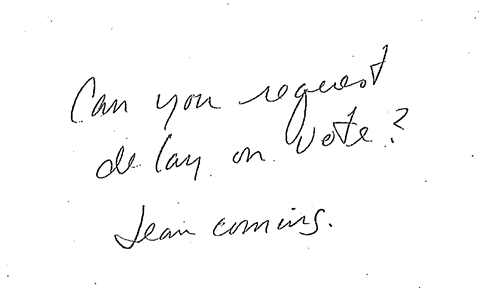Will the Seattle City Council Redline the Homeless?
A couple weeks ago the Seattle City Council engaged in some political intrigue around the passage of legislation out of committee allowing homeless encampments in parts of the city. The problem? A proposal from Councilmember Sawant to study allowing the so called “tent cities” in residential areas was scuttled by Councilmember Tim Burgess. Burgess, the President of the Council, helped Jean Godden, who is not a member of the committee considering the proposed amendment, to show up just in time to vote “no” on the study. Now according to Council rules, any Councilmember can attend a meeting, but it is very unusual. And in this case it was clear that single-family interest prevailed again over efforts to look at widening the options for homeless shelter and housing.
We’ve seen this before with small-lot legislation, microhousing legislation, low-rise legislation, and now the single-family voting block has again motivated against some of the city’s most vulnerable and poor people. And after all, it is just a study. Why not take a look at how more homeless shelter options could be created in residential areas? There is still a chance that the full Council could revisit the idea of the study. They should and this is the letter we sent in support of Councilmember Sawant’s idea of just studying the idea that all of Seattle–even single-family neighborhoods–should be part of the solution that would reduce or end homeless in our city.
March 15, 2015
Dear Council President Burgess and Mayor Murray,
I am writing you in support of efforts by Councilmember Sawant to add a study of tent cities in residential areas. Here’s what a tent city resident said in testimony to the City Council on this subject:
We have examined the encampment bill, and we must oppose it because it redlines homeless people out of residential areas. Sending people to live in [non-residential] areas only is wrong. 40 years ago we got rid of racial redlining, we don’t need to return to those days by redlining the homeless now.
As I have said before when I wrote in support of the Urban Rest Stop in Ballard, every square foot of this city must be considered as part of our housing solution. While Councilmember Sawant’s proposed study may find that residential areas won’t work for homeless shelter solutions, we think you must fully explore this potential.
To consign people seeking shelter options to far-flung and hard to reach areas will act as a disincentive for them to seek these options out and be self-defeating. Why deny organizers of tent city the option to work with local neighbors who might be willing to welcome transitional shelter for people who are currently homeless. And, as we have seen with tiny house solutions in Eugene[1] and in Olympia[2], there are viable options to solve the problem of people without homes in Seattle.
As has been correctly pointed out, Seattle is a city that seems to love studies and process. Why not allow a study and process around where we can find an opportunity together, as a community, to create innovative shelter and housing solutions to reduce the human toll of homelessness? I can’t think of a single sensible reason not to include Councilmember Sawant’s proposal to study this. Can you? Please allow the amendment to be voted on in full Council and pass it unanimously.
Sincerely,
Roger Valdez
Director
[1] Opportunity Village, Eugene, Oregon, http://www.opportunityvillageeugene.org/
[2] Quixote Village, Olympia, Washington, http://quixotevillage.com/


